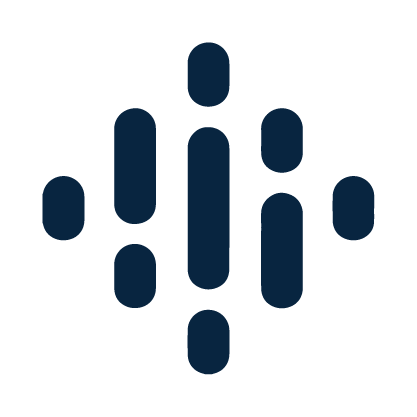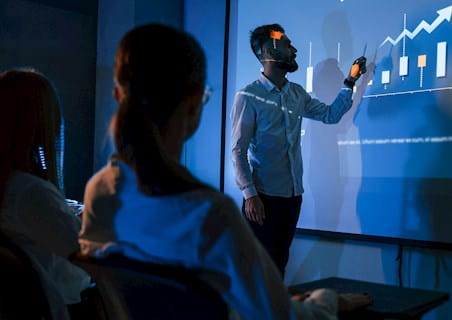This is Digital, Special Episode: Best of Season 1
A look back at our favorite moments from the first season
- Subscribe
-
 Spotify
Spotify
-
 Apple Podcasts
Apple Podcasts
-
 Google Podcasts
Google Podcasts
-
 iHeart
iHeart
-
 Stitcher
Stitcher
-
 Pandora
Pandora
About the episode
In this special episode, we’ve compiled some of our favorite moments from Season 1. Our host, Rissa Reddan, shares her takeaways from the 14 episodes and previews what’s in store for Season 2 of This is Digital.
Featuring
Rissa Reddan
In our first season of This is Digital, we asked executives and thought leaders to take us behind the scenes of their digital transformation journeys. Throughout the season, we sat down with fascinating guests and learned how to apply the digital mindset, the value of taking risks, how to embrace failure, and the trends, technologies, and challenges companies are facing today.
Get a look inside some of our favorite moments from the show and see how you can apply being digital in your own organization.
What is the importance of customer experience and what role does it play in implementing digital changes in a company?
Get out there and understand what your customers want and need, why they bought from you, or maybe why they left you–why they chose not to buy from you and buy from a competitor. It’s important to always stay curious; thinking you know what's happening based on what your spreadsheet or your CRM tool is telling you is not a way to run the business.Tiffani Bova Global Growth Evangelist, Salesforce
We're trying to shift our focus away from data points and reports and toward the customer. So really we're saying: instead of starting from the top and working down, let's start from the bottom and work up. From the customer's perspective, how do we understand everything about any one of our patients?Patrick Stevenson Vice President of Data and Analytics Strategy, Health Alliance Plan (HAP)
How can companies unlock the value of digital transformation?
Are we going to start recognizing data as an actual asset on balance sheets? That would of course require a lot of restatement of balance sheets. Clearly data meets those criteria, it's just that the accountants haven't come around to acknowledge it. So, this creates a situation where there's a lot of undue market volatility because there's no transparency into the data that organizations have or how they use it from an investment standpoint. On the other hand, it gives companies who are using data better a bit of an edge because they can be opaque about it, sheltering what they're doing from the prying eyes of competitors.Doug Laney Innovation Fellow, West Monroe
We brought the risk, compliance, and legal teams in a room with lots of whiteboards and our software engineers and designers, and we just walked them through the experience. We grounded it in what the customer was going to experience and what the customer was going to do and all the surrounding systems. And we got to a place where we got sign off that day–which was because of the magic of watching a software engineer really walk a legal professional through the implications, the wide-reaching ramifications of what that feature might do. I think that humans can actually communicate pretty well. You can bring people in a room, allow them to do a co-creation of what the outcome needs to be.Courtney Hemphill Partner in Product, Engineering, and Design, West Monroe
When I joined Taco Bell, we had no app. We didn't do any e-commerce. We were such a successful traditional QSR brand with 75% of our business coming through drive-through. When I got here, we hired a new chief brand officer and she said, “what are the three things you want me to focus on?” And I said, “three things: digital, digital, digital.” When you go to digital, what does that mean? Do we do a little bit? Do we go all in? Do we worry about disrupting our model that works so well? But if you just read the tea leaves, the world is going toward handheld devices, laptops, and connectivity to make it an easier experience. We're not there yet, but we're certainly on that journey.Mark King CEO, Taco Bell
We've been obviously playing with a lot of digital tools in this world. And we've got one in particular, which really allows for crowdsourcing in a very anonymous and unbiased, unfiltered way. So how do you get information from employees or vendors, suppliers, partners, you name it, and have them maybe co-create solutions with us versus it being done to them. That can really increase the speed of adoption and getting people involved.Beth Montag-Schmaltz Senior Partner in Transformation Enablement, West Monroe
How has being more digital impacted the industry, and what can we see in the years ahead?
The beginning of the pandemic certainly showed us the disparities between different groups of people and what they had access to. But then I think it started to level the playing ground a little bit–you could no longer have just the camaraderie that some investors have with founders that tell them, oh, this is a good investment because we can have a beer together. And I think that's why a lot of founders from underrepresented or underestimated backgrounds were able to shine and, in some cases, bypass investors altogether and reach their customers faster and better and stronger.Arlan Hamilton Founder, Entrepreneur, and Author
As I think about the next generation of leading organizations, they are defined by good products, with good tech, with amazing design. All of those things coming together allow organizations to move faster into the market and make it easier for them to enter and change the landscape that they exist in today. When we talk about clients becoming digital, we do that because we want them to rethink their whole business entirely, not just a piece of it.Casey Foss Chief Commercial Officer, West Monroe
I'm an optimist on the US economy and on productivity and future growth. So even if we have a recession, to me that sows the seeds of entrepreneurs picking up the pieces and investing. Even if the first half of 2023 isn't great, I think the economy will get back on its feet in 2024. And I think digital technology is going to play a key role. Think about health and medicine. Covid really was devastating, but it really opened eyes to new technology like mRNA technology, new vaccine development techniques. I think we're going to be seeing that technology unlocking all kinds of new vaccination capabilities that can improve health.Rob Wescott Economist and Former White House Advisor
Keep Listening to This is Digital
Related Content

This is Digital
West Monroe's team of experts and guests pull back the curtain on how to build digital throughout an organization. Through real-world examples, you will learn how to spot digital transformation in real life, and how to make small decisions every day that make a big impact on growth.









